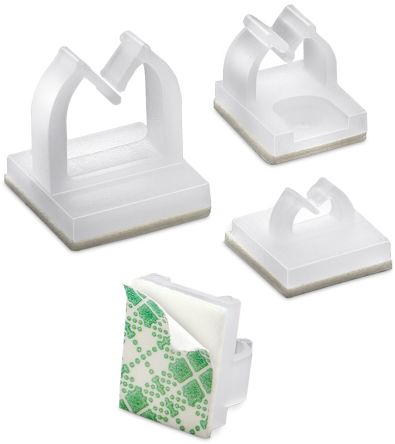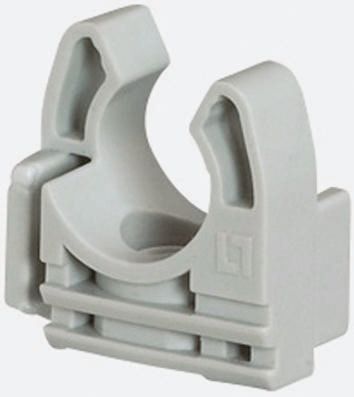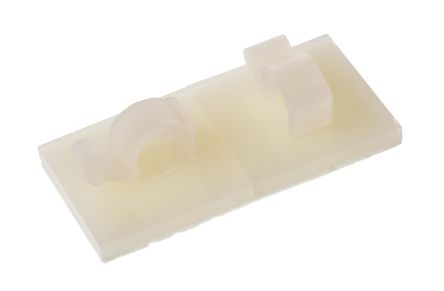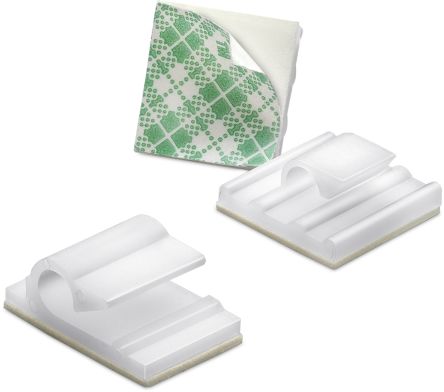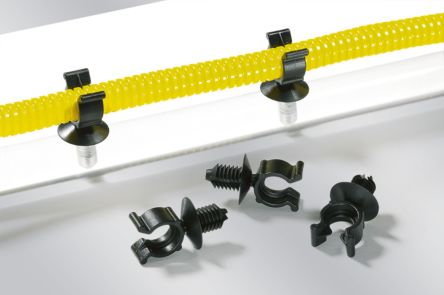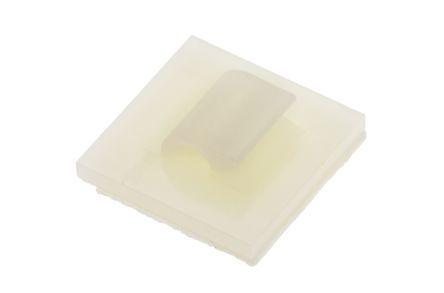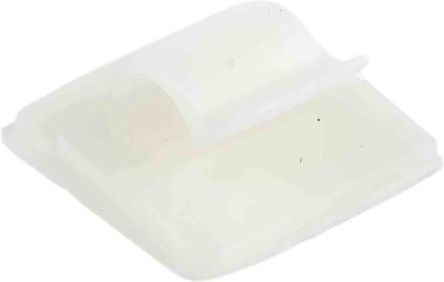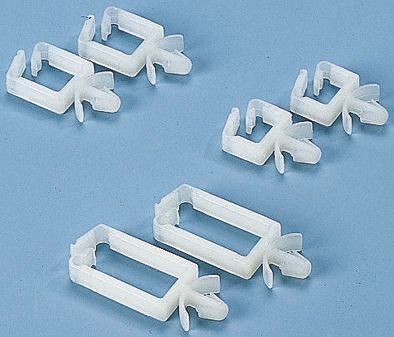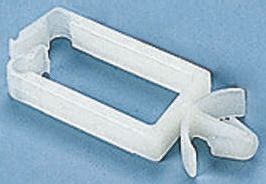- Automation & Control Gear
- Cables & Wires
- Enclosures & Server Racks
- Fuses & Circuit Breakers
- HVAC, Fans & Thermal Management
- Lighting
- Relays & Signal Conditioning
- Switches
- Batteries & Chargers
- Connectors
- Displays & Optoelectronics
- ESD Control, Cleanroom & PCB Prototyping
- Passive Components
- Power Supplies & Transformers
- Raspberry Pi, Arduino, ROCK, STEM Education & Development Tools
- Semiconductors
Cable Clips & Clamps
Cable clips and cable clamps are used to secure and organize cables, preventing them from tangling or getting damaged. They come in various sizes, materials, and designs to accommodate different types and quantities of cables. The specific mechanism may vary slightly depending on the type of clip or clamp. See our cable clips and clamps guide.
How do Cable Clips & Clamps work?
- Design: Cable clips and clamps are typically designed as small, sturdy devices that can be attached to a surface such as a wall, desk, or other structures. They have a central channel or opening where the cable can be inserted.
- Insertion: To use a cable clip or clamp, you first position it in the desired location along the cable's path. The opening of the clip or clamp should face the direction in which the cable will be inserted.
- Cable placement: Once the clip or clamp is positioned, you insert the cable into the central channel or opening. The cable should fit snugly but not be overly compressed or stretched.
- Securing: Depending on the design, there are different mechanisms for securing the cable in place. Some cable clips have built-in adhesive backing, allowing them to be stuck directly to a surface. Others may require screws or nails for attachment. Cable clamps, on the other hand, often have adjustable straps or locking mechanisms that hold the cable tightly.
- Adjustment and organization: After securing the cable, you can adjust the position of the clip or clamp along the cable's length, if needed, to achieve the desired organization and routing. This helps keep the cable neat and prevents it from hanging loosely or becoming tangled.
Applications
Home and office: Cable clips and clamps are commonly used to organize and secure cables for electronic devices such as computers, televisions, routers, and lamps. They help keep cords organized and prevent them from tangling or creating a cluttered appearance.
Data centres: Data centres house a large number of cables, including network cables, power cables, and fibre optic cables. Cable clips and clamps are used to manage and route these cables efficiently, ensuring they are properly organized and labelled for easy maintenance and troubleshooting.
Automotive and aerospace: In the automotive and aerospace industries, cable clips and clamps are used to secure and route cables in vehicles, aircraft, and other transportation systems. They help prevent cables from interfering with moving parts, reduce vibrations, and protect against damage caused by friction or impact.
Construction and infrastructure: During construction and infrastructure projects, cable clips and clamps are used to secure electrical wiring, communication cables, and other types of cables. They ensure that cables are safely attached to walls, ceilings, or other structures, preventing hazards, and maintaining a tidy appearance.
Entertainment and events: In the entertainment industry, cable management is crucial for stage productions, concerts, and events. Cable clips and clamps are used to secure audio, video, and lighting cables, allowing for safe and efficient setup, and minimizing the risk of accidents or cable damage during performances.
Industrial settings: Industrial environments often involve a complex network of cables for power distribution, machinery, and control systems. Cable clips and clamps are used to organize and secure these cables, preventing them from becoming tangled or interfering with operations. They also help comply with safety regulations and maintenance requirements.

